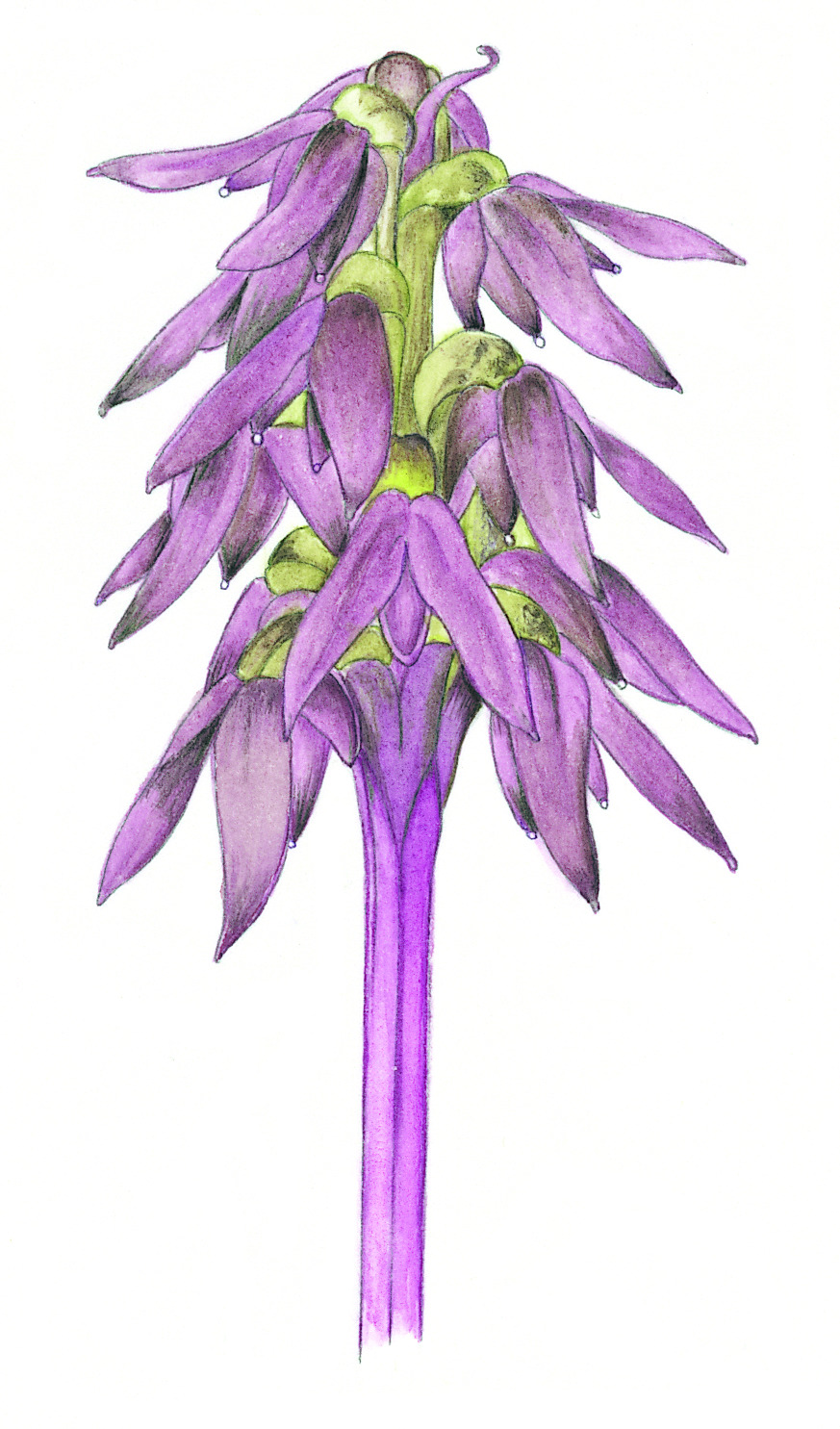Corunastylis leptochila
D.L.JonesFlowering plants 5–10 cm tall. Leaf lamina 10–15 mm long, projecting through the basal flowers of the inflorescence and outwards from the peduncle. Inflorescence 8–15 mm long, densely crowded. Flowers 5–20, reddish brown to dark purplish, 4–5 mm across, nodding; perianth segments sharply pointed; dorsal sepal ovate, 2–2.5 mm long, c. 1.5 mm wide, margins entire; lateral sepals divergent, linear-lanceolate, 3.5–4.5 mm long, c. 1 mm wide, apex with a small white beady gland; petals ovate, c. 2.5 mm long and 1 mm wide, apex with a small white beady gland. Labellum narrow-elliptic to narrow-oblong, 2–2.2 mm long, 0.6–0.8 mm wide, margins entire; callus oblong, occupying most of the ventral surface and extending to the labellum apex. Column wings smooth or slightly scabrid. Flowers Nov.–Dec.
OtP. Critically endangered and extremely localized in Victoria where known only from a single location (and c. 6 plants) in the Otway Ranges in open forest near a swamp.
Similar in appearance to C. densa (as treated here), but that species has a wider labellum, favours subalpine habitats and flowers later.
Previously treated as C. nudiscapa, but that species is now regarded as endemic to south-eastern Tasmania (Jones 2017).
Jones, D.L. (1994). Genoplesium. In: Walsh, N.G.; Entwisle, T.J., Flora of Victoria Vol. 2, Ferns and Allied Plants, Conifers and Monocotyledons, pp. 886–893. Inkata Press, Melbourne.
 Spinning
SpinningJones, D.L. (2017). Characterisation of Corunastylis nudiscapa, Corunastylis densa (Orchidaceae: Prasophyllinaee) and the description of a Corunastylis leptochila, a related, new species.. Australian Orchid Review 82(5): 48–56.

